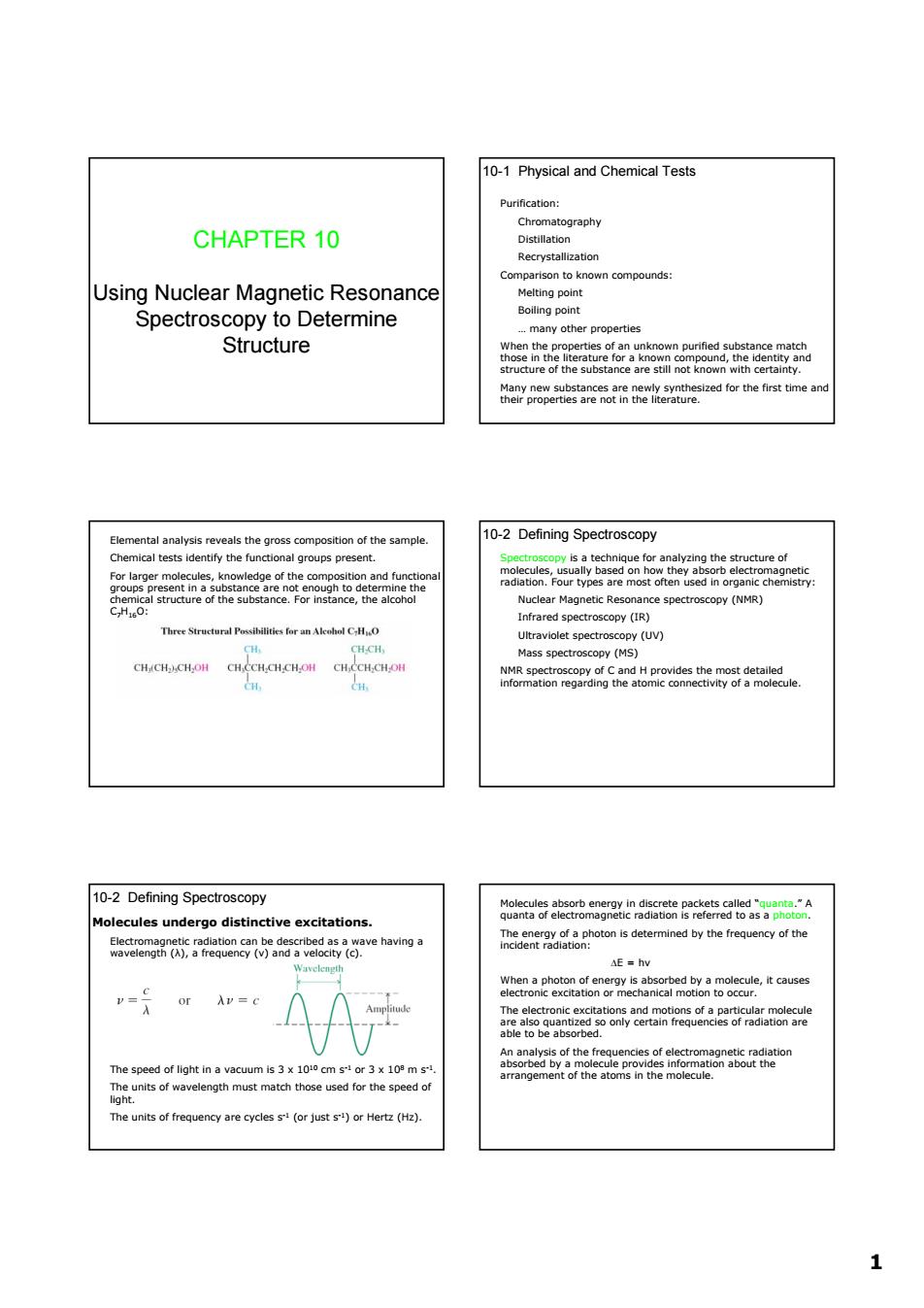正在加载图片...

10-1 Physical and Chemical Tests Purification: tography CHAPTER 10 wn compounds Using Nuclear Magnetic Resonance Spectroscopy to Determine Boiling poin Structure 10-2 Defining Spectroscopy Thre P C.o CHICHSCHON CHECHCHCHOM CHECHGIOH Mass spectro (MS CH 10-2 Defining Spectroscopy Molecules undergo distinctive excitations. or Av-c peed of light in a vacuum is 3 x 1040 cm s or 3 x 10P m s 2 (ou)or Hertz(H 1 1 CHAPTER 10 Using Nuclear Magnetic Resonance Spectroscopy to Determine Structure 10-1 Physical and Chemical Tests Purification: Chromatography Distillation Recrystallization Comparison to known compounds: Melting point Boiling point … many other properties When the properties of an unknown purified substance match those in the literature for a known compound, the identity and structure of the substance are still not known with certainty. Many new substances are newly synthesized for the first time and their properties are not in the literature. Elemental analysis reveals the gross composition of the sample. Chemical tests identify the functional groups present. For larger molecules, knowledge of the composition and functional groups present in a substance are not enough to determine the chemical structure of the substance. For instance, the alcohol C7H16O: 10-2 Defining Spectroscopy Spectroscopy is a technique for analyzing the structure of molecules, usually based on how they absorb electromagnetic radiation. Four types are most often used in organic chemistry: Nuclear Magnetic Resonance spectroscopy (NMR) Infrared spectroscopy (IR) Ultraviolet spectroscopy (UV) Mass spectroscopy (MS) NMR spectroscopy of C and H provides the most detailed information regarding the atomic connectivity of a molecule. 10-2 Defining Spectroscopy Molecules undergo distinctive excitations. Electromagnetic radiation can be described as a wave having a wavelength (λ), a frequency (ν) and a velocity (c). The speed of light in a vacuum is 3 x 1010 cm s-1 or 3 x 108 m s-1. The units of wavelength must match those used for the speed of light. The units of frequency are cycles s-1 (or just s-1) or Hertz (Hz). Molecules absorb energy in discrete packets called “quanta.” A quanta of electromagnetic radiation is referred to as a photon. The energy of a photon is determined by the frequency of the incident radiation: ΔE = hν When a photon of energy is absorbed by a molecule, it causes electronic excitation or mechanical motion to occur. The electronic excitations and motions of a particular molecule are also quantized so only certain frequencies of radiation are able to be absorbed. An analysis of the frequencies of electromagnetic radiation absorbed by a molecule provides information about the arrangement of the atoms in the molecule